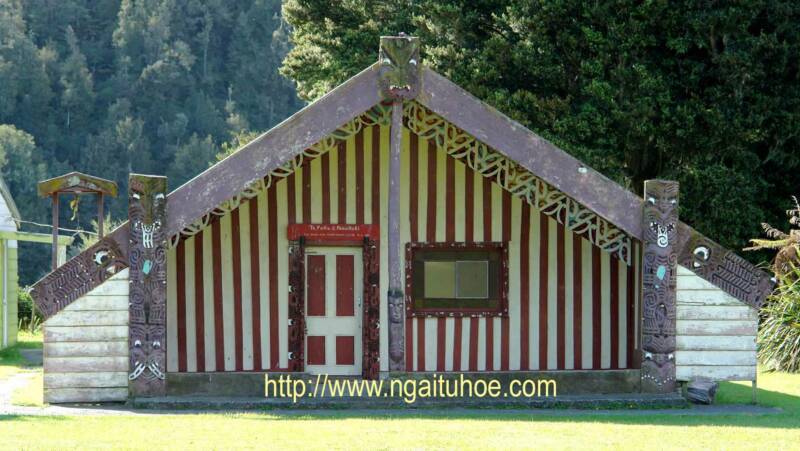

He constantly wore greenstone ear pendants inherited from Rāpata Wahawaha and the Tūhoe leader and tohunga Te Pairi Tūterangi, whose pupil he had been. At home he was content to wear a simple red blanket rapaki (wrap-around) in the house or while working in his one-acre garden. On the marae Te Kani was known not only for his brilliant oratory but also for his impeccable style of dress. During this period Te Kani was variously a committee member and chairman until May 1959, when he finally retired. This led to conflict over membership of the management committee faction fought faction, leading to intervention by the Māori Land Court. In 1953 hapū representation was replaced by individuals voting according to the number of shares they owned. The trust was known as the Mangatū Incorporation from 1948, when control passed from a commissioner to a tribal committee. In 1918 Te Kani began a more than 40-year association with the Mangatū trust, formed to administer tribal lands inland from Gisborne he represented Ngāti Wahia interests. Te Kani landscaped the grounds with two tennis courts, a croquet lawn and a pear-shaped centre lawn acknowledging Apirana and Arihia Ngata's marriage under a pear tree at Whareponga on the East Coast. Among the ornate furnishings was a Bechstein grand piano. A remarkable feature was an observation tower on the roof, for which Te Kani gave the name Tower House. Takawhaki, Te Kani's mother, built the couple a large house with five bedrooms on family land at Pūhātikotiko (Pūhā) about 22 miles from Gisborne. There were no children from the marriage, but Te Kani and Te Rina adopted several. The wedding linked two of the East Coast's most important families and strengthened Ngata's leadership. Te Kani and Pānapa had been colleagues at Te Rau Theological College at Gisborne, where Te Kani was certificated as an Anglican lay reader. Te Kani's best man was Wiremu Nētana Pānapa, who later became the second bishop of Aotearoa. On 18 June 1917 he married Te Rina Turupa Ngata, eldest daughter of Apirana and Arihia Ngata, in a lavish ceremony at Parihimanihi, Waihīrere Herbert W. He also developed a formidable skill in whaikorero, the art of oratory. From 1912 to 1915 he studied at the ancient whare wananga at Rūātoki, where he was taught Māori religion, genealogies and customs.


During this period he studied piano at the Nelson School of Music, specialising in the music of Chopin. In 1909 he was enrolled at Nelson College, where he spent three years. His early education was at Waerenga-a-hika school near Gisborne he then had one year at Gisborne High School.
Tuhoe hapu full#
On occasions he used the full name of Hetekia Te Kani-ā-Takirau Kerekere Tūhoe te Ua among family and close friends he was called Kani. His principal tribal affiliations were Ngā Pōtiki and Te Whānau-a-Kai of Te Aitanga-a-Māhaki Ngāti Ruapani and Te Whānau-a-Tarawaho, a hapū of Tūhoe. Hetekia Te Kani te Ua, the eldest son of Katerina Takawhaki Kerekere and her husband, Harawira Tūhoe te Ua, was born on 29 August 1892 in Gisborne. It was translated into te reo Māori by the Dictionary of New Zealand Biography team. This biography, written by Henare te Ua, was first published in the Dictionary of New Zealand Biography in 1998. She also teaches Te Reo Maori in the community and is active in her hapu and on her marae.Te Aitanga-a-Māhaki leader, genealogist, orator To keep things in balance Hīria enjoys time with family, friends and her two dogs. She believes that inquiry and ongoing reflective practice are keys to developing agentic learning pedagogy and practices.
Tuhoe hapu professional#
Previously she worked as a lead facilitator in Phase two of the Te Kotahitanga research and professional development programme. Hīria is of Tuhoe descent and a fluent speaker of Te Reo Māori with 27 years experience working in the secondary sector. Hīria works as a kaitakawaenga/education consultant from her home town of Whakatāne.Ĭulturally responsive and relational pedagogy Ko Maungapōhatu te maunga Ko Ōhinemataroa te awa Ko Mataatua te waka Ko Tauarau te marae Ko Ngāti-Rongo te hapu Ko Tūhoe te iwi Ko Ruatoki te haukainga


 0 kommentar(er)
0 kommentar(er)
